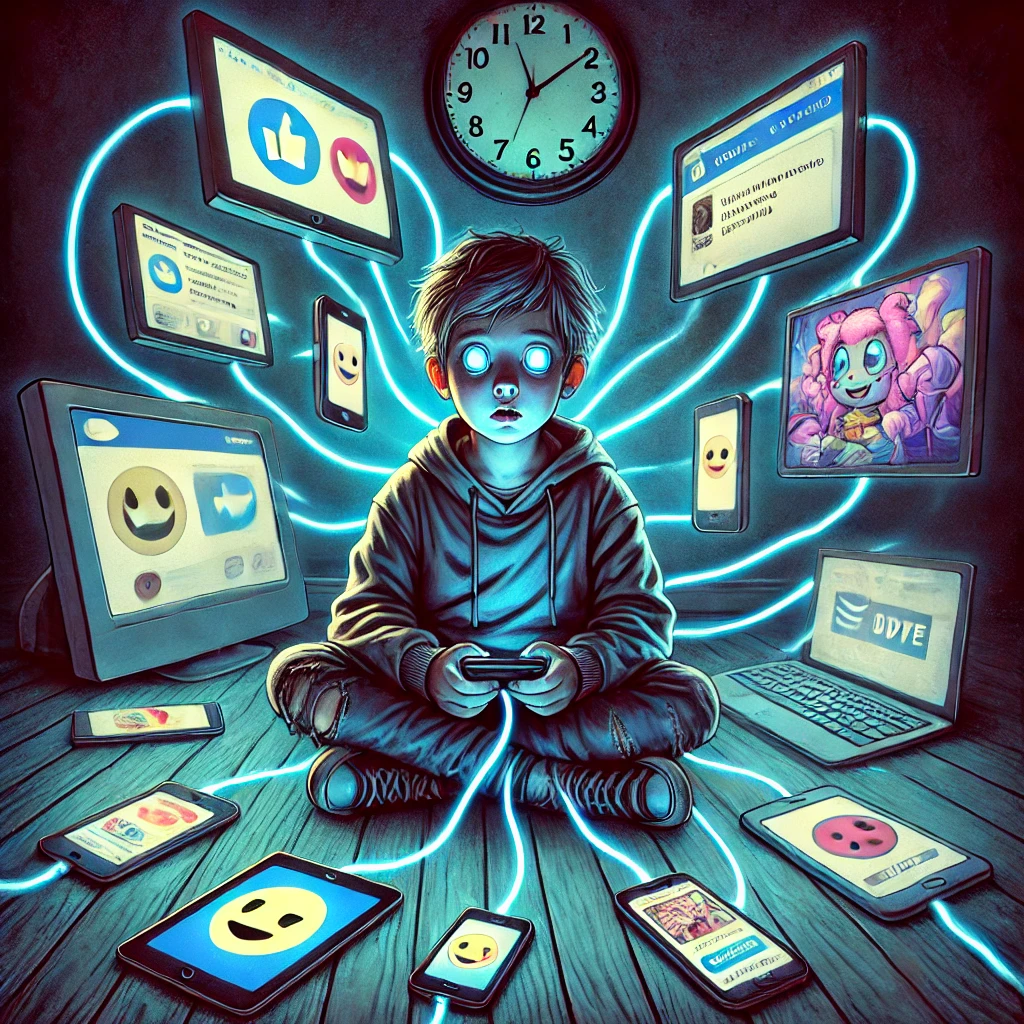
I remember a 7-year-old boy, the son of a friend and patient. He is an active, social, and curious child, deeply interested in nature: fishing, catching insects and lizards, birdwatching, and more. Yet, whenever he has a chance, he plays Minecraft or watches endless YouTube reels for hours. He seems addicted to screens, much like many kids his age.
He has serious issues at school: poor test performance, no interest in reading or math, and a short attention span. Teachers suspected Attention-Deficit/Hyperactivity Disorder (ADHD), so his mother took him for an MRI to check brain morphology. Brain imaging is not typically used for ADHD diagnosis, so we didn’t expect any findings. The scans were mostly normal, except for a slight reduction in white matter in the frontal cortex. This indicates a relative loss of myelinated axons that connect different brain areas, resulting in shortened neural pathways. Such changes are usually associated with cognitive dysfunction and impaired decision-making.
This pattern is well documented in the brains of long-term substance and alcohol addicts, who also show white matter shrinkage, as well as other neuromorphological and neurochemical changes: mu-opioid receptor (MOR) desensitization, reduced grey matter volume, upregulation of the GABA system, and ion channel dysregulation. But this boy was only seven, healthy with no family history of addiction. How could this be?
It turns out that digital addiction in children and teens is now well studied. In addition to reduced white matter integrity, MRI scans often reveal grey matter reduction in the prefrontal cortex (linked to impulse control) and the amygdala (emotional regulation). Screen-addicted children may also show an enlarged nucleus accumbens (part of the brain’s dopamine reward system), hyperconnectivity in the default mode network (DMN), which drives compulsive thinking, and hypoconnectivity between the prefrontal cortex and limbic areas, weakening emotional control. These are serious, measurable changes that may worsen over time and persist into adulthood.
Not surprisingly, sudden removal of screen time (“no more iPad!”) can trigger digital withdrawal syndrome, which mimics withdrawal from drugs or alcohol. Symptoms include anxiety, aggression, sleep disturbances, fatigue, and headaches—not to mention a decline in school performance.
This issue is visible in large-scale epidemiological studies. The NIH’s Adolescent Brain Cognitive Development (ABCD) study, tracking over 11,000 children aged 9–10, found that more than 7 hours of daily screen time was linked to lower cognitive and memory scores and reduced IQ: https://nida.nih.gov/research-topics/adolescent-brain/longitudinal-study-adolescent-brain-cognitive-development-abcd-study
Similarly, the OECD’s PISA study showed that children who spend more than 4 hours a day on screens perform worse in reading, math, and science: https://www.oecd.org/en/about/programmes/pisa/pisa-data.html
This is a serious, systemic problem, and it’s not going away. Schools increasingly rely on digital platforms (my son’s school uses five different educational programs), while digital content continues to grow—from 2 zettabytes in 2010 to a projected 180 zettabytes in 2025.
A blanket ban on screens is not realistic. One promising strategy is to replace passive screen use with interactive, cognitively challenging games. A Swedish study showed a slight IQ increase in 9–12-year-old children who played complex video games instead of watching youtube reels: https://www.nature.com/articles/s41598-022-11341-2
However, this did not improve social development. Human brains are wired for face-to-face interaction; no screen can substitute real socialization. Sweden, recognizing this, recently ended the mandatory use of tablets in preschool and early primary education, reinstated traditional textbooks, and banned smartphones in schools.
Digital addiction in children is real, measurable, and harmful. And the longer we ignore it, the harder it will be to reverse.
